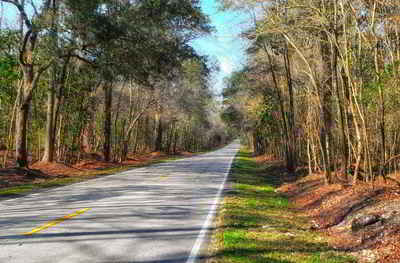South Carolina Counties
South Carolina is made up of fourty-six counties. They range in size from 392 square miles (1,016 square kilometers) in the case of Calhoun County to 1,358 square miles (3,517 square kilometers) in the case of Charleston County. The least populous county is McCormick County, with only 9,958 residents, while the most populous county is Greenville County, with a population of 395,357, despite the state's most populous city, Columbia, being located in Richland County.Orangeburg County, South Carolina
Orangeburg County Education, Geography, and History

Orangeburg County is a county located in the state of South Carolina. Based on the 2010 census, the population was 92,501. Its county seat
is Orangeburg. The county was created in 1769.
Orangeburg County comprises the Orangeburg, SC Micropolitan Statistical Area, which is also included in the Columbia-Orangeburg-Newberry, SC
Combined Statistical Area. It is located in the Midlands region of South Carolina.
Etymology - Origin of Orangeburg County Name
Orangeburg is named for William V of Orange, son-in-law of George II of Great Britain.
Demographics:
County QuickFacts: CensusBureau Quick Facts
Orangeburg County History
Orangeburg County was named for William IV (1711-1751), Prince of Orange, the son-in-law of King George II. Orangeburg District was established in 1769, and from 1785 to 1791 it included four counties: Lexington, Orange, Winton, and Lewisburg. The district was reduced in size when Barnwell (1800) and Lexington (1804) districts were formed; parts of Orangeburg also went to form Aiken (1871) and Calhoun (1908) counties. Swiss and German farmers moved into this region around 1735, and English settlers from the lowcountry followed. The battle of Eutaw Springs was fought there during the Revolutionary War on September 8, 1781; it was the last major battle of the war in South Carolina. Large plantations using slave labor were established in Orangeburg in the nineteenth century, and the county became a major producer of cotton. Railroads arrived in the area early; Branchville became the first railroad junction in the state in 1840. Union troops under General Sherman passed through Orangeburg in February 1865. Orangeburg County was the birthplace of historian Alexander S. Salley (1871-1961) and singer Eartha Kitt.
Geography: Land and Water
As reported by the Census Bureau, the county has a total area of 1,128 square miles (2,922 km2), of which,
1,106 square miles (2,865 km2) of it is land and 22 square miles (57 km2) of it (1.94%) is water
Neighboring Counties
Bordering counties are as follows:
- Calhoun County, South Carolina - north
- Clarendon County, South Carolina - northeast
- Dorchester County, South Carolina - southeast
- Berkeley County, South Carolina - southeast
- Bamberg County, South Carolina - south
- Colleton County, South Carolina - south
- Aiken County, South Carolina - west
- Barnwell County, South Carolina - west
- Lexington County, South Carolina - northwest
Education







